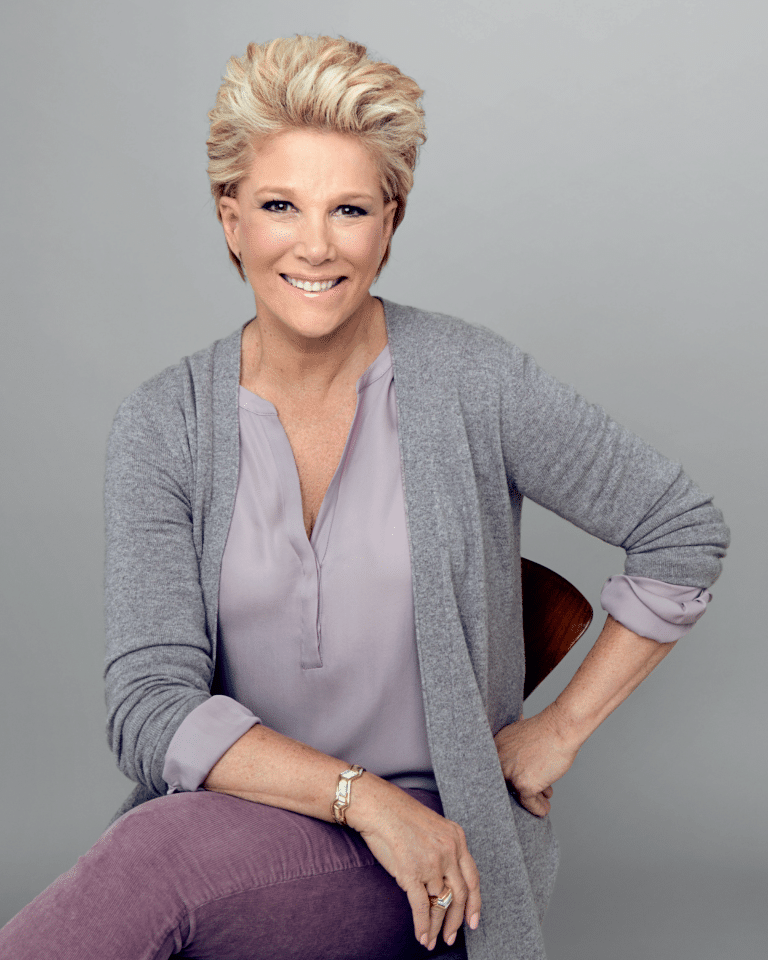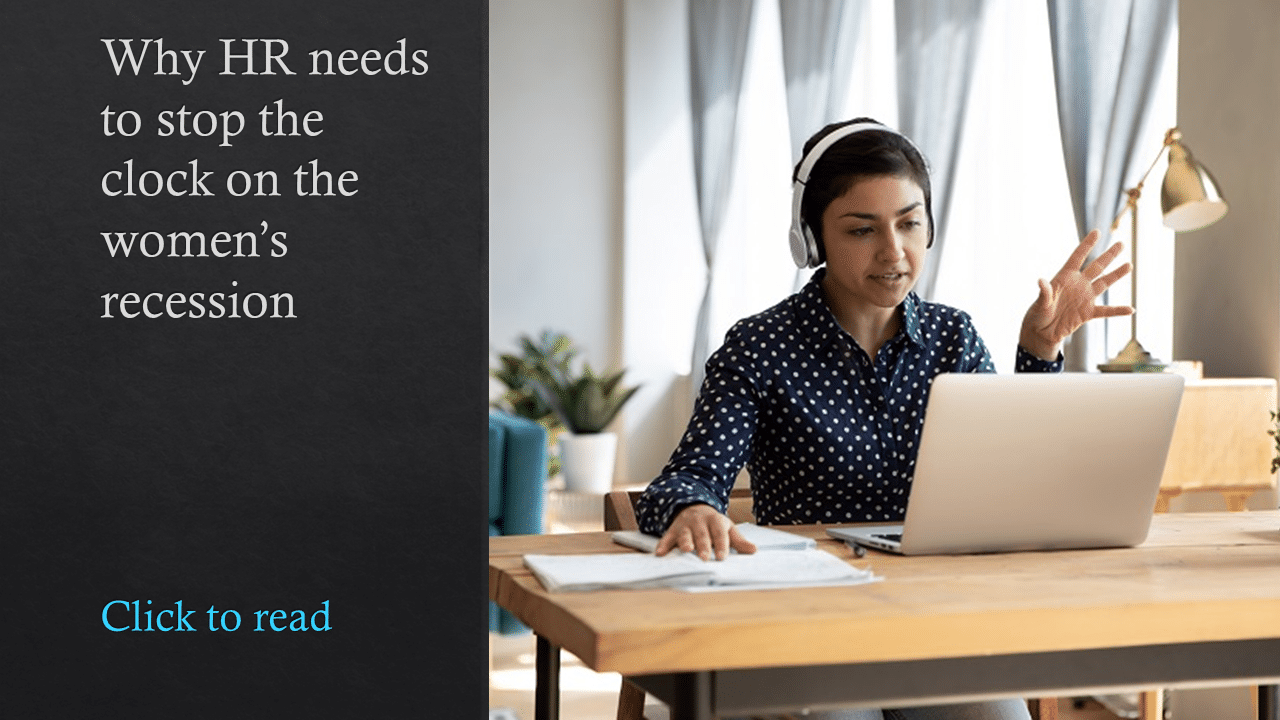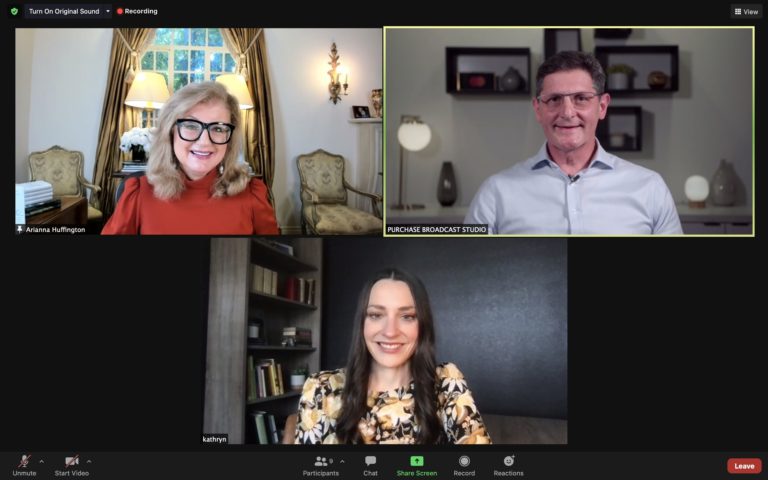Benefits have always been a vital company strategy. But in the age of COVID-19—when health and safety were the biggest priorities, employees struggled with caregiving responsibilities, mental health issues and so much more—the importance of benefits has reached new heights. Smart employers and HR leaders turned to benefits as one of their biggest COVID-19 strategies to help struggling employees—a focus that will only continue during the pandemic and beyond.
“We had to be responsive, be agile and be able to look around and anticipate and make decisions on the basis of what’s in the best interest of our associates,” TIAA CHRO Sean Woodroffe said during a keynote session at HRE’s 2021 Health & Benefits Leadership Conference this week. The virtual three-day event, which drew more than 4,500 attendees and 63 exhibitors, went in-depth on COVID-19: what employers have learned, the steps they took to use benefits to address the short-term effects of the crisis, and what changes the pandemic will make on the industry long-term.
Here are some of the biggest takeaways from the event. (All sessions are available on-demand through June 11. Register here.)
The pandemic has forced employers to get creative with benefits—and leadership. Although the past year has been difficult, it also brought new opportunities for better serving employees and rethinking leadership, experts said during the event. “As human resources executives, we were in the thick of everything, which is appropriate because the pandemic, at its heart, is a human crisis,” Kristin Johnson, chief human resources officer at Edward Jones, said during a session. “It made us more aware than ever how much value we place on human connection and relationships.”
For Edward Jones, that focus on connection and employee relationships came in the form of new benefits and programs and a heightened focus on employee health and wellness. Among the changes the company made due to the pandemic were 10 extra COVID days off, because, Johnson said, “we didn’t want any of our colleagues to choose between their careers and their families”; waived deductibles for the testing and treatment of COVID-19; added programs for emotional and mental health; and more free mental health visits, made available for all employees. For parents, the company also provided tips and resources to navigate virtual learning and homeschooling. “We had to step up our game when the pandemic struck,” Johnson said.
Sean Woodroffe
TIAA also leaned on benefits as its biggest COVID-19 strategy, Woodroffe explained during a keynote address Thursday. Among the many benefits enhancements the financial services firm made over the last year were expanded mental health and telehealth programs, work from home stipends, backup child and elder care support and even free at-home COVID testing. “Treating associates with respect, dignity, care and compassion is the best approach an employer can take,” he said. “It’s a welcoming approach in great times, and it’s the only approach in challenging times.”
Employers need to make moves to help caregivers. Although a number of states have passed their own comprehensive paid leave policies and more companies are offering versions themselves, “the vast majority of families in the U.S. still don’t have access to paid leave and medical leave,” Joan Lunden—former Good Morning America host and caregiving advocate—said during the event’s opening keynote. She called that a huge problem.
“The lack of access to paid leave or the ability to work flex schedules or from home—of course, the pandemic has changed all that—but these are the factors that can force terrific, talented, hard-working employees to drop right out of the labor force entirely. And it makes no sense. It makes no sense for the employees and the employer.
“We are in the middle of a caregiving crisis, and it’s a problem that’s only going to grow.” Joan Lunden

Joan Lunden
“We are in the middle of a caregiving crisis, and it’s a problem that’s only going to grow,” Lunden said. “We need to support families, and we need people to stay engaged in the workforce.”
Emergency savings is a rising benefit trend. The statistics painting a picture of employees’ financial situation were bad before COVID: 40% of Americans couldn’t afford a $400 unexpected expense; about two-thirds of Americans lived paycheck to paycheck, and “short-term money matters” were the top source of stress for Americans. The pandemic worsened these statistics and exacerbated financial problems for scores of employees. “The day has come where we need workplace savings to have more than just a single option,” Devin Miller, CEO and co-founder of Secure, an emergency savings fintech platform, said during a session on Wednesday. “You need to have variation to support different employees in different stages of life. You can’t be using your 401(k) as an emergency fund.”
Expect employers to offer emergency savings programs as an employee benefit, keynoter Melissa Gopnik, senior vice president at financial security nonprofit Commonwealth, said during a keynote. Split deposits—which can put some of a worker’s paycheck directly into a savings account—are an especially low-hanging opportunity for employers to embrace, she said.

Financial adviser Suze Orman, Secure CEO Devin Miller and benefits Editor Kathryn Mayer discuss emergency savings at the 2021 virtual Healthcare & Benefits Leadership Conference.
Meanwhile, Suze Orman, personal finance expert, Secure co-founder and podcast host, said during the conference that employers have an obligation to help employees save and feel financially secure. “An emergency fund offers hope,” she said. “The one word—besides secure—that I hope you want to give to all your employees is hope. Without hope, it’s like you’re asphyxiated; you can’t breathe. And sometimes, just a little action instills hope.”
Mental health is in the spotlight. Mental health issues also were already a massive issue before COVID-19: “Before this pandemic, there was a pandemic called the mental health crisis,” Louis Gagnon, CEO of Total Brain, said during a panel discussion. But a year-plus of social distancing, lockdowns and dramatic shifts to remote work upended the day-to-day realities for many employees. Workplace mental health has moved from conversations in the C-suite to a pandemic within a pandemic. “We all know mental health has been an issue; the pandemic just completely ripped the Band-Aid off and made this front and center for employers,” said Colleen McHugh, executive vice president of the American Health Policy Institute, noting that improving employee mental health is going to be a strategic imperative going forward.
Employers made many moves to help struggling employees in the last year, helping to mitigate some issues, but there is still much work to be done. Looking ahead, the new mantra for employers will be helping employees disconnect, said Michael Thompson, president and CEO of the National Alliance of Healthcare Purchaser Coalitions. “This whole issue of continuously ‘being on’ is burning people out.”
The workplace after the pandemic is coming into focus. For more than a year, employers have been laboring through the pandemic transition—adjusting employees to remote work, adapting benefits to meet their evolving needs and revamping policies to provide needed support. Now, the focus is starting to shift to the long-term. “We need to think about creating the model of the future, not the model any longer in reaction to the pandemic,” said Viq Pervaaz, partner and health sciences leader at EY, in a session with Fernando Salinas, global senior vice president of HR, R&D, robotics, digital solutions and external innovation at Johnson & Johnson. The pair recommended employers rely on a structured framework—informed by guiding principles and taking into consideration all potential variables—to move from transition to transformation, in everything from benefits offerings to workplace technology.
 “We are severing our ties with the pandemic and saying, ‘How do we build for the future in a sustainable capacity, one that engages employees?’” Pervaaz said.
“We are severing our ties with the pandemic and saying, ‘How do we build for the future in a sustainable capacity, one that engages employees?’” Pervaaz said.
That question also was addressed by John Sumser, founder and editor of HRExaminer, who explored during his session how the very goal of benefits has changed in the last year and what’s to come.
The pandemic upended the social contract between employees and employers, he said. The flexibility extended over the past year will likely become more permanent, and both employees and organizations saw that innovation can happen quickly—prompting a new relationship where employees have more voice in benefits design. Driven by an upcoming surge in new benefits software, Sumser envisions benefits targeted to helping lower-income workers overcome inequities, a continued rise in telemedicine, and a focus on health and safety, among other areas.
“The golden age of benefits is coming,” he said. “All of these new circumstances are going to create an explosion in the kinds of benefits employers can extend to employees.”
 Organizations need to work on creating cultures of resilience. Resilience is the word of 2020 and 2021, said Arianna Huffington, founder and CEO of Thrive Global and founder of The Huffington Post. Particularly after the challenges of the last year, Huffington said during a keynote Thursday, nearly all C-suites recognize the connection between stressed, anxious employees and a halt in productivity. Now, it’s time for employers to take that awareness “upstream,” Huffington said, helping workers identify the triggers of mental health challenges and incorporate behaviors to build resilience into their daily routines. For instance, “micro-steps”—such as taking short breaks of just 60-90 seconds for deep breathing or reflection throughout the day—can help employees start to course-correct from stress, Huffington said.
Organizations need to work on creating cultures of resilience. Resilience is the word of 2020 and 2021, said Arianna Huffington, founder and CEO of Thrive Global and founder of The Huffington Post. Particularly after the challenges of the last year, Huffington said during a keynote Thursday, nearly all C-suites recognize the connection between stressed, anxious employees and a halt in productivity. Now, it’s time for employers to take that awareness “upstream,” Huffington said, helping workers identify the triggers of mental health challenges and incorporate behaviors to build resilience into their daily routines. For instance, “micro-steps”—such as taking short breaks of just 60-90 seconds for deep breathing or reflection throughout the day—can help employees start to course-correct from stress, Huffington said.
That’s the approach that Michael Fracarro, CHRO of Mastercard, said leadership took at the credit card company, a partner of behavior change platform Thrive. Last year, Mastercard conducted a series of pulse surveys and found that “Zoom fatigue” was common among employees. In response, the company rolled out new meeting guidelines to ensure employees have at least 15-minute breaks between meetings and that no meetings last longer than 30-45 minutes. It also instituted “meeting-free days” and “summer Fridays,” where employees are encouraged to take time for themselves and their families.
Tara Scott, medical director of integrative medicine at Summa Health and chief medical officer at Revitalize Medical Group, echoed that sentiment in another session, likening the need for preventative stress-reduction to a six-month oil change, regular dental appointments and retirement savings. None is mandatory, but if you’re proactive, you’ll see better outcomes eventually.
“Let’s treat our health this way,” Scott said. “There’s never a time like the present to cultivate resilience.”
Don’t fear remote work. COVID-19 prompted a massive shift to remote work, with the vast majority of employers moving their workers home when the pandemic began. Industry insiders say with the experiment going well, we won’t be going back to a full in-office experience even post-pandemic—and employers shouldn’t try to.
“The good news is that many companies have come to realize their worst fears about remote work have not come true, and there are many things about remote work that improved engagement, productivity and more,” Zoë Harte, chief people officer at Upwork, said during a session Tuesday. Remote and hybrid workforces made up of full-time employees, some of whom may be in the office, plus remote employees and independent or freelance talent, Harte said, have many benefits for employers—if managed correctly. The arrangement can offer employers the ability to scale up and down when they need to, it can spark innovation, and it can improve diversity and inclusion efforts.
Employers should lean on benefits to address racial inequities. There has never been more momentum for employers to take action in helping underserved populations. But that help needs to go beyond “clickbait” anti-racism initiatives launched only in response to the national reckoning on racial injustice, experts said during the conference. Jennifer Benz, senior vice president and communications leader of Segal Benz, said during a panel Wednesday that there is “tremendous opportunity, desire and pressure” for employers to play a significant role in driving change around racial inequities in healthcare and benefits design. Such issues have gone unaddressed for too long, speakers said, in part because people of color were not centered in corporate DE&I strategies—leading to a dearth of data, including related to health, and ultimately to a lack of momentum.
Among the actions that benefits and HR leaders can take include strategically redesigning benefits to directly respond to healthcare disparities facing certain populations. For instance, with higher rates of breast cancer among Black women, does plan design allow for earlier screening? Is the co-pay a barrier? Consider that people of color are also dealing with pay inequities, and that can influence healthcare outcomes as well. Accountability is another key factor. Work with benefits brokers, vendors and consultants who adhere to anti-racist principles; even sit through anti-racism training with them and work together to create culturally competent strategies, said Jessica Brooks, president and CEO of the Pittsburgh Business Group on Health.

Jessica Brooks
Look at racial inequality from a broader lens as well, she added, noting that employers need to “be visible” on all of the drivers of public health disparities. “There’s so much that we can do that if we don’t do something,” Brooks said, “we’re choosing to be part of the problem.”
COVID-19 vaccination is one of employers’ biggest priorities—and challenges. After more than a year of social distancing, remote work, lockdowns and more, COVID-19 vaccinations have represented a crucial key to overcoming the pandemic and restoring safe interactions. But, says Carol Morrison, senior research analyst at the Institute for Corporate Productivity, vaccines also represent a top concern for employers. “While they represent great hope, vaccinations also demand close attention from business leaders. It’s one of the biggest challenges employers have right now,” she said during a keynote session Tuesday.
Morrison noted that i4cp research finds that encouragement—through education efforts or incentives like paid time off—is the top COVID vaccine strategy for employers. Education is the vaccine strategy being embraced by Elkay Manufacturing. Although the company took time to decide whether to require, encourage or stay silent on vaccines, it “ultimately decided that encouraging our employees to take the vaccine aligned best with our culture of respecting the individuality of our employees,” Tonie Lyubelsky, senior director, total rewards at Elkay, said during the keynote. Elkay regularly educates employees on vaccination, with its CEO discussing the merits of the vaccine in weekly video meetings and other company leaders regularly talking about the efficacy and safety of the shots.
Related: Still weighing vaccine incentives? Here’s what 12 employers have done
American Benefits Council President Jim Klein, meanwhile, said during the event’s closing keynote that employers contemplating their vaccination plans—whether it’s incentivizing workers to get vaccinated or requiring them to do so—should consult with legal counsel.
Use crisis as an opportunity. Silver linings to a tumultuous year? You bet. Optimism over how the pandemic, and social and racial unrest, will change things for the better was a common theme throughout the event, with several industry insiders pointing to a number of positives coming out of the pandemic.
Edward Jones’ Johnson said although the last year has been the toughest of her career, it’s also been a rewarding one that helped reinforce HR’s commitment to meeting the needs of employees and being agile with benefits strategies. “To succeed during COVID, we need to display qualities that aren’t always associated with leadership—empathy and vulnerability,” she said, noting that her company will take these lessons and let employee feedback and employee engagement survey results help guide them on benefit and program changes.
Huffington said employers and HR leaders have an opportunity to create a thriving workplace culture and help employees with their mental wellbeing and resilience. “This is a once-in-a-generation opportunity to redefine productivity, how we work and live,” she said. “We’ve stopped assuming we have to continue living in a breathless, frenetic way to achieve great results.”